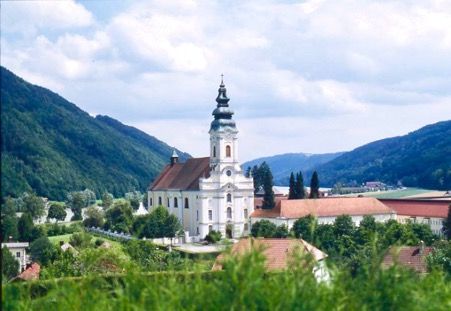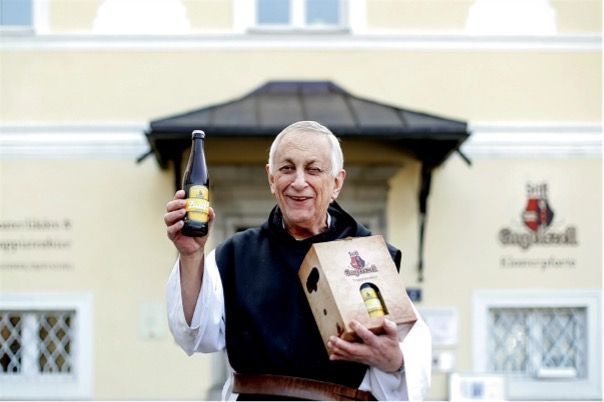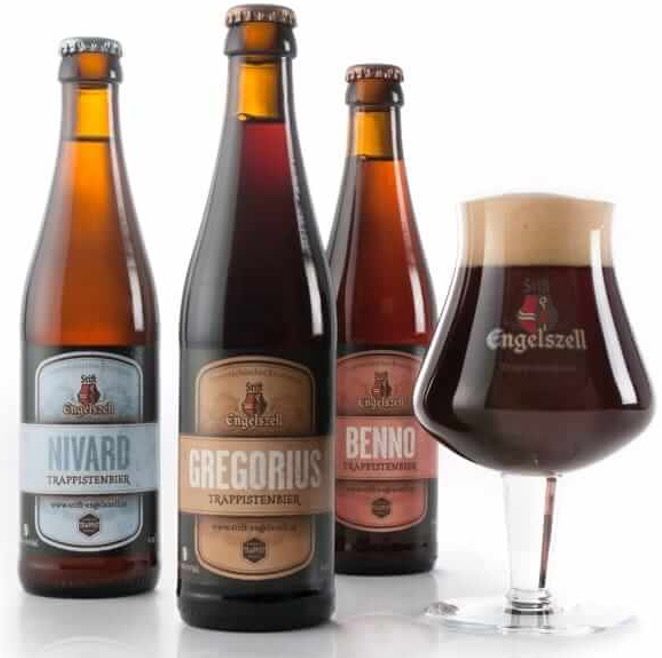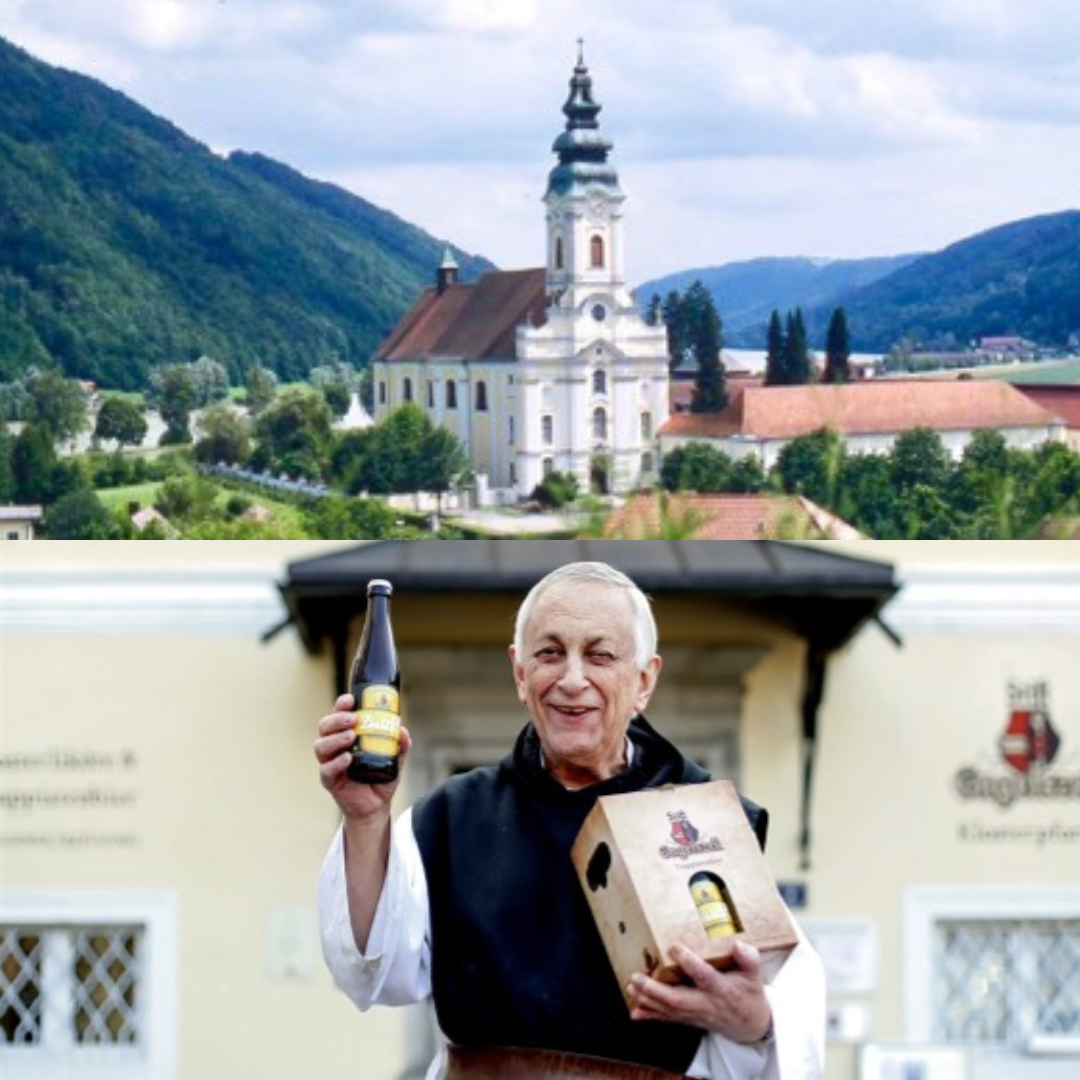The beautiful Engelszell Abbey is located in Austria, on the banks of the Danube.
This community of Trappist monks lives in silence to the rhythm of work and prayer.
The community has only recently made a name for itself in the small circle of abbeys producing authentic Trappist beers.
Did this introduction pique your curiosity? I'll take you on a little tour to find out more!

The Origins of Engelszell Abbey
In 1293, then-Passau Bishop Bernhard of Pramsbach, founded Engelszell Abbey. Two years later, in 1295, the community joined the Cistercian order.
Its influence was important, but unfortunately, it did not last. Epidemics and fires weakened the community considerably. The final blow came in 1786 when Emperor Joseph II closed the Engelszell Abbey for good because he thought that a contemplative order was useless.
For more than a century, Engelszell was used as a porcelain factory and a holiday resort for wealthy families. This was a far cry from its original vocation of prayer.
In 1925, Trappist monks from the Oelenberg Abbey arrived, strictly observing the Cistercian order's rules. Fortunately, they brought the Engelszell Abbey back to life. Then, six years later, the new Engelszell monastery again became an abbey. And to top it all off, it became the only Trappist abbey in Austria!
And today?

Today, Engelszell Abbey is home to a small group of monks who follow the rule of St. Benedict, "Ora et labora," or "pray and work."
They have six daily services, the first of which is at 5:30 in the morning. The rest of the day, the monks read, study, and do manual work. Yes, everyone does their share of household chores, and above all, they need hands to make the liquors and beer the abbey sells!
The famous Trappist beers
The Engelszell Abbey released its first beers in 2012. The last of the beers released on the Trappist beer market proudly bears the ATP logo, which means "Authentic Trappist Product."
This guarantees the three criteria of a true Trappist beer:
- The beer must be brewed in the abbey.
- It must be brewed by the monks or under their supervision.
- Beer sale profits must maintain the abbey or help charities.
Three beers named after three abbots
● Gregorius is a brown beer in the "Quadrupel" style, with a dark color, aromas of honey, caramel, and sugar, and flavors of cocoa, roasted malt, and candied fruit. Gregorius is the name of the first abbot of the community!
● Benno is an amber beer. The nose reveals aromas of honey, flowers, and fruit. On the palate, roasted malt and smoky notes take over. This beer (Benno) is named after the second abbot of the community!
● The Nivard is a light blonde beer (5.5% alcohol) with peach and citrus aromas on the nose and fruity flavors on the palate. And not surprisingly, it was the third abbot of Engelszell Abbey who gave it its name!
More recently, for the past 2 years, the abbey released two new beers, but whose names escape the logic of the former abbot fathers:
- The Weisse: in existence since 2019, it is a regional white beer. The hops used give a slightly acidic beer, golden in color with a slight cloudiness!
- Finally, the Zwickl, brewed since 2020, with amber color and much fruitier aromas than the other beers

Where can you buy the monks' beers?
If you want to taste their beers, nothing better than to go there!
The Engelszell Abbey is located in Austria. If that's too far for you, you can always purchase Engelszell Abbey beers here.


